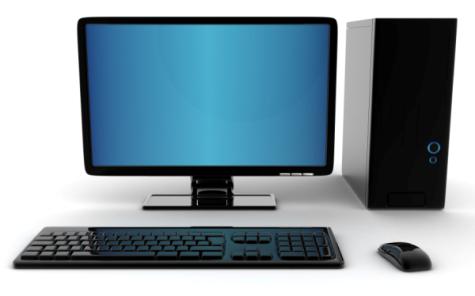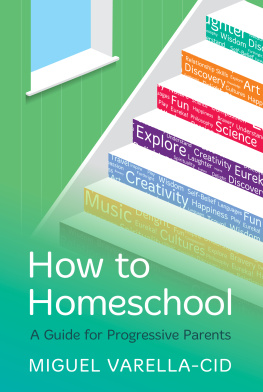The Ultimate Guide for Using Technology inHomeschool
By Kevin B. Davis
Smashwords Edition
Copyright 2014 Kevin B. Davis
ALL RIGHTS RESERVED
To my amazing wife and daughters, you make it allworthwhile!
This e-book is licensed for your personal enjoymentonly. This e-book may not be re-sold or given away to other people.If you would like to share this book with another person, pleasepurchase an additional copy for each recipient. If youre readingthis book and did not purchase it, or it was not purchased for youruse only, then please return to your favorite e-book retailer andpurchase your own copy. Thank you for respecting the hard work ofthis author.
INTRODUCTION:
Homeschooling can open doors to an excitingand motivating learning experience. Thousands of families haveenjoyed the benefits of homeschooling over many years, and aplethora of programs have been creating the optimal educationalexperience for those families that homeschooling is a good fit.
Technology is one of the most important anduseful tools for today's homeschool family, but also one of themost overlooked. It can sometimes be quite difficult for homeschoolparents to get themselves out of the public school mindset ofbooks, pencils, paper, library, and a classroom-type setting athome. Through this book, I'd like to help you understand technologyso that you can maximize its use. With technology, you can makehomeschooling more fun, effective, and efficient, all while openingsome new avenues for travel, scheduling, and freedom.
Before you get scared and stop reading, giveme a chance to show you that its not as scary as it sounds. I'm nogenius (just ask my wife), and if I can do it, pretty much anyonecan learn this stuff. For our family, integrating technology hashelped us take our homeschooling to the next level. Even if youchoose not to approach homeschooling in the same way that that wedo, with travel, snow birding, and full-on technophile kids, therewill definitely be some great info in here for you.
It can be easy to simply jump on someanti-technology bandwagon and just decide we dont need thatnew-fangled stuff here, but I think this attitude can beshort-sighted. Technology is fully integrated into most youngpeoples lives, and its possible that dismissing technology couldcause parents to lose connection opportunities with their kids. Imhopeful that this book will provide some valuable information thatwill help you better use technology, not only in your homeschool,but in your interactions with your kids.
It should be noted that this book is not ahow-to book about homeschooling; its really a how-to book abouttechnology for homeschooling. Because there are so many differentphilosophies with homeschooling, I am hesitant to say that one wayis the best way to use technology. My goal is to provide a thoroughexplanation about technology concepts that you can use in yourhomeschool. Its really up to you how you ultimately use thoseconcepts.
Along the way, Ill provide examples andinformation about some ways weve used technology to help us withour homeschool.
ABOUT THE AUTHOR:
I'm a homeschool dad. After years of battlingpersonal and academic issues in public school, we elected to bringour kids home to offer them a more customized educationalexperience. I like to call what we do an "entrepreneurial approachto education." By that, I mean that we, as a family/team, decidethe best academic, extracurricular, and travel strategies tomaximize learning, and above all, maximize life.

Im also an entrepreneur. Ive run a webdevelopment business for more than 15 years, as well as otherendeavors on the web and brick and mortar. I tend to approachhomeschool from this same entrepreneurial perspective.
As you might imagine, technology is somethingwe use every day in a multitude of ways, so it was natural toinclude it in our homeschool plans to make the most out ofeducation. It has afforded us easier travel both locally and acrossthe country/world, simplified (which is a bit counterintuitive) ourhomeschool approach, and provided our kids with a broader range ofeducational opportunities.
My hope is that I can share at least some ofwhat we've learned along the way to make using technology inhomeschool a little easier.
Connect with Me:
Facebook Twitter - Web
A QUICK NOTE ABOUT THE BOOK LAYOUT ANDFORMATTING:
Each topic has its own chapter, which isstandard book-type stuff. But, sometimes, it is easy for our brainsto completely shut off when we read, especially when the conceptsare a bit foreign. For that reason, at the end of each section,you'll find a "Just Give Me the Facts" summary that will sum upthat chapter. You might be thinking, "then why give the rest of theinfo?" Well, it's still important and pertinent information, andwho's going to pay for 10 short summary paragraphs, right?
E-Books can be a little hard on formattingitems like bulleted and numbered lists and special formatting. Forthat reason, and to ensure a consistent reading experience acrossall platforms, I've tried to keep everything as simple aspossible.
TABLE OF CONTENTS
How to choose a computer platform that works foryou.
Which operating system is "best?"
Chromebook, Netbooks, and Other Tablet Options
Easy home networking, and mobile computingoptions.
Web filtering technologies to keep your kids safeonline.
Free up your bookshelves by using e-book readers andaudiobooks; tips on choosing, options, and ways to get freebooks.
Using the leading search engines effectively andsafely.
Alternative curriculum options tobooks/pencils/paper.
Electronic communication, texting, apps, socialnetworking, and other tools to stay in touch and broadensocialization options.
Online media options, YouTube, Netflix, Amazon, andhow they can broaden your homeschool experience.
A collection of useful links.
CHAPTER 1
MY COMPUTER DOESN'T FIT IN MY BACKPACK!
HOW TO CHOOSE A COMPUTER PLATFORM THAT WORKS FORYOU.
If you walk into any electronics retailer orshop much online, it won't take long for you to realize just howmany different computer options there are. However, if we break itdown a little, it isn't quite so overwhelming, and there's an addedbonus: educated consumers save money. Heck, this book is paying foritself already!
There are two main options when shopping fora new computer: desktop or laptop. We'll talk more about Apple vs.Windows in the .
SECTION 1 DESKTOPS V. LAPTOPS
DESKTOPS

Advantages - There are many advantagesto going with a desktop:
Typically Cheaper - this is especiallytrue if you already have a monitor.
More Durable - they don't move around,so typically the only damage they see is a bit of dust.
Better Speed and Storage - at the sameprice point, desktops will have more RAM (onboard memory,) whichallows the computer to do its work faster. Desktop hard drives arealso usually cheaper than their laptop counterparts, so they oftencome with more space to store files, images, videos, etc.
Improved Peripherals - peripheral isjust a fancy name for "extra stuff," like monitors, mice, andkeyboards. Desktops use a stand-alone mouse and keyboard whichwould be larger than a those found on a laptop, and of course, aprinter is stationary, so that's definitely more convenient.Desktops require a separate monitor, which allows you to get morescreen size than a laptop provides. Most HDTVs even haveconnectors that turn them in to a monitor, so if you're havingtrouble getting your kid to focus on his homework, hook up thecomputer to the 55" flat screen! This is a dramatization, ofcourse, but you get the idea.
Next page














